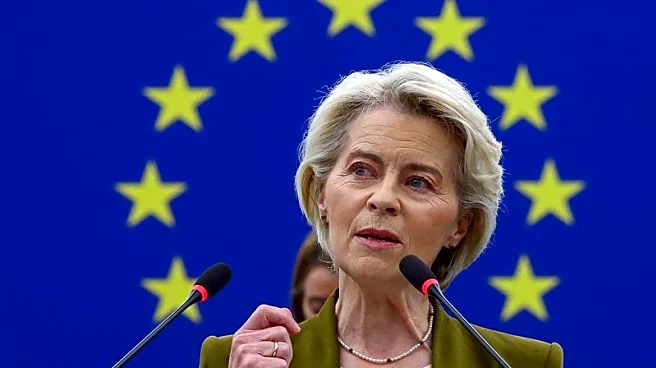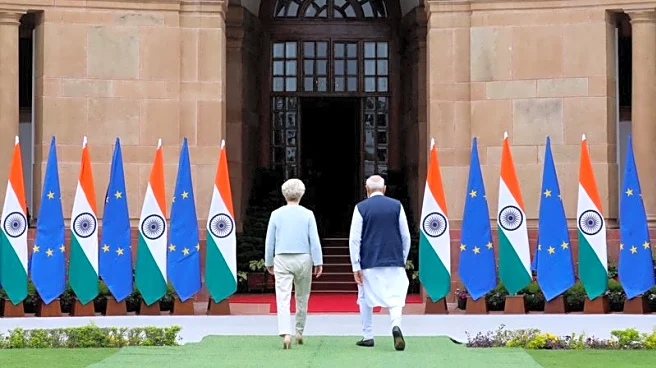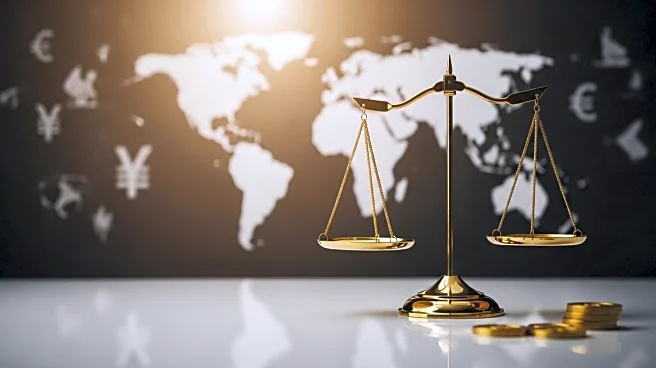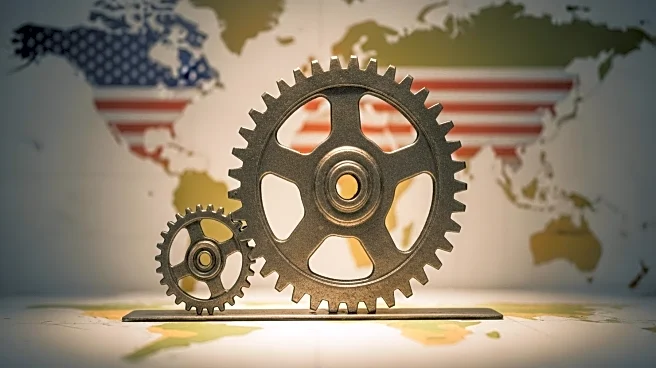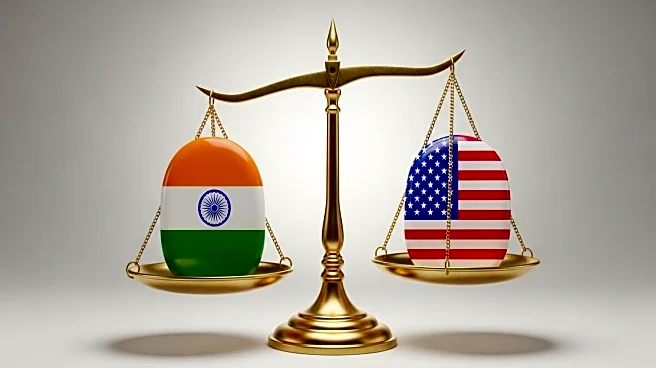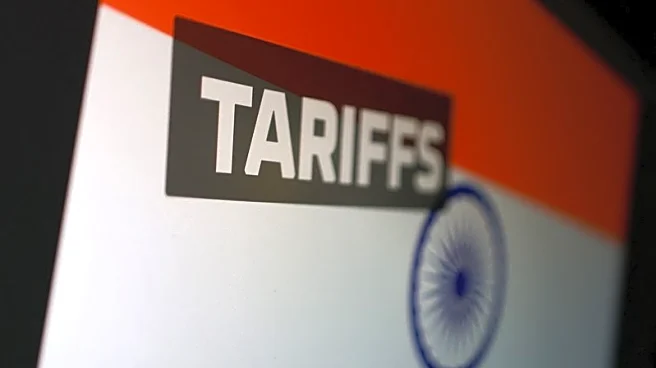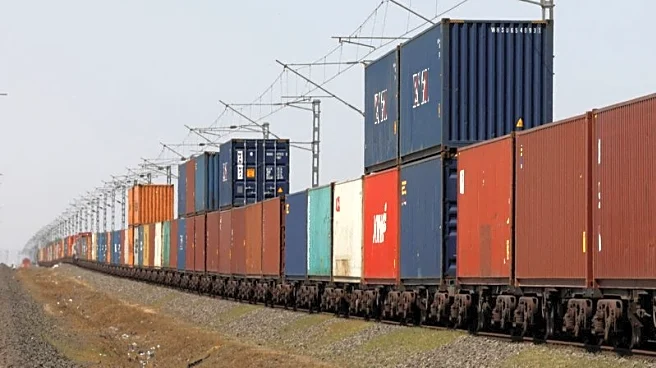What's Happening?
India and the European Union (EU) are close to finalizing a free trade agreement (FTA) as they aim to conclude negotiations by the end of the year. The talks are progressing against the backdrop of US tariffs imposed under President Trump, which have created uncertainty in international trade. Both India and the EU are seeking to establish stable trade partnerships to mitigate the impact of these tariffs. The negotiations have focused on reducing tariffs and expanding market access for key sectors, including agriculture, textiles, and technology. The EU is India's second-largest trading partner, and the FTA is expected to enhance trade relations between the two regions.
Why It's Important?
The potential FTA between India and the EU represents a significant shift in global trade dynamics, particularly in response to US protectionist policies. For India, the agreement offers an opportunity to diversify its export markets and reduce dependency on the US. For the EU, the deal provides access to India's large and growing market, enhancing its geopolitical influence in the Indo-Pacific region. The FTA could also strengthen economic ties between India and the EU, promoting investment and collaboration in various sectors. The agreement is seen as a strategic move to counterbalance the effects of US tariffs and foster economic stability.
What's Next?
The next round of negotiations is scheduled to take place in Brussels in October, with both sides aiming to finalize the agreement by the end of the year. The successful conclusion of the FTA could lead to increased trade and investment flows between India and the EU. However, challenges remain, including resolving issues related to market access and tariff reductions. Both parties will need to address these concerns to ensure a balanced and mutually beneficial agreement. The outcome of the negotiations will have implications for global trade patterns and the strategic alignment of India and the EU.



